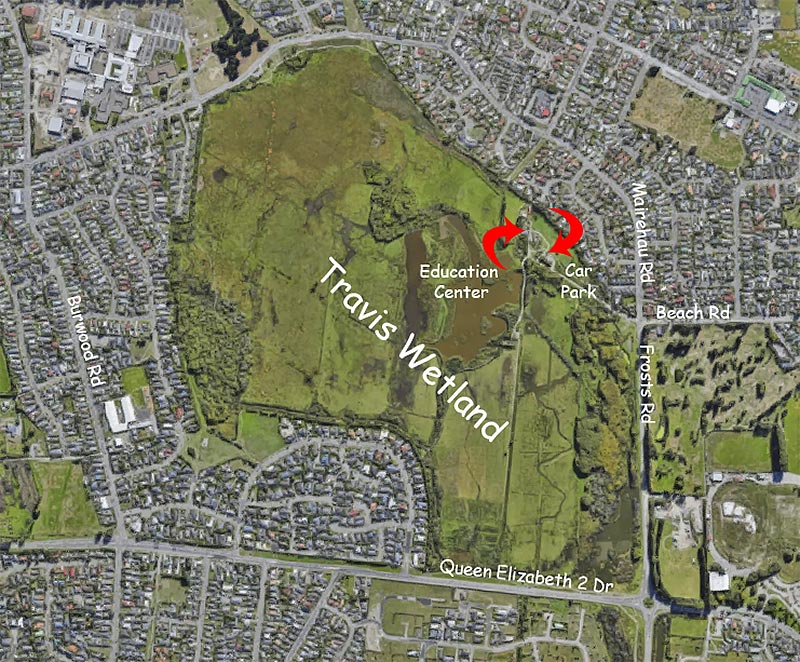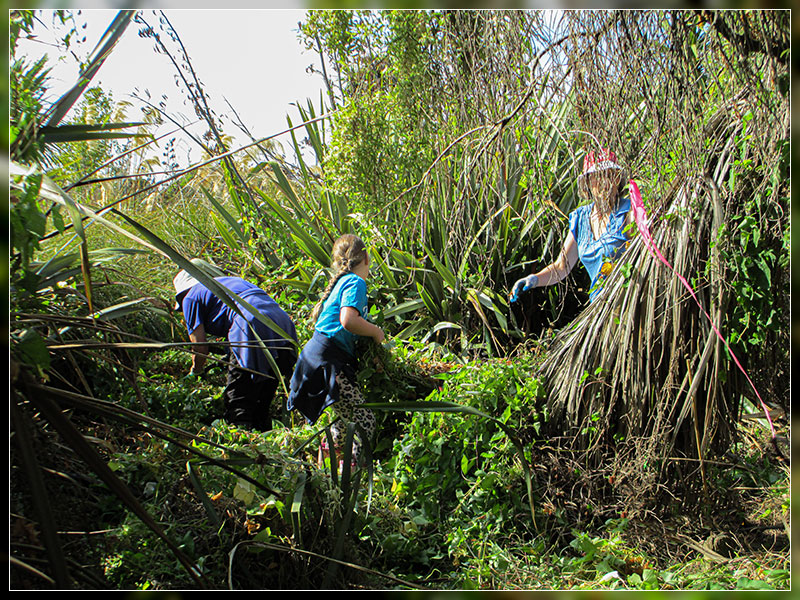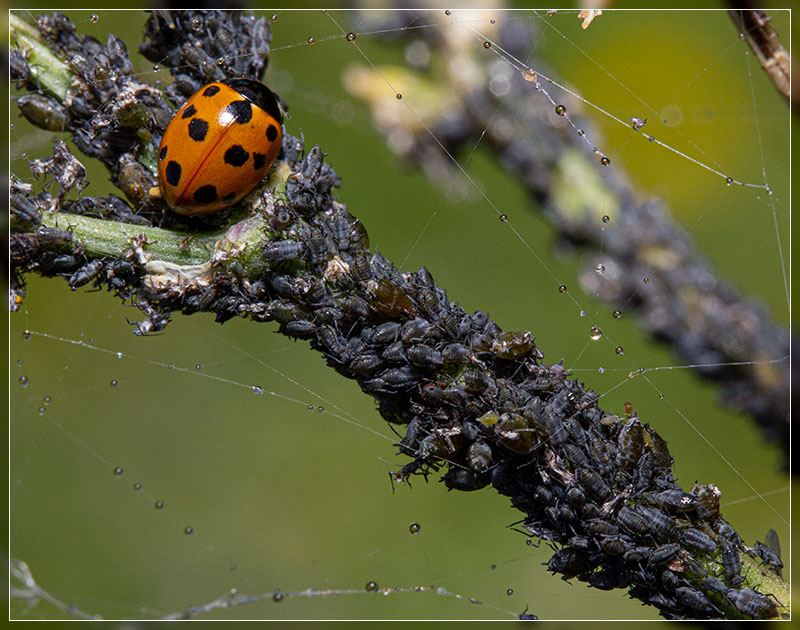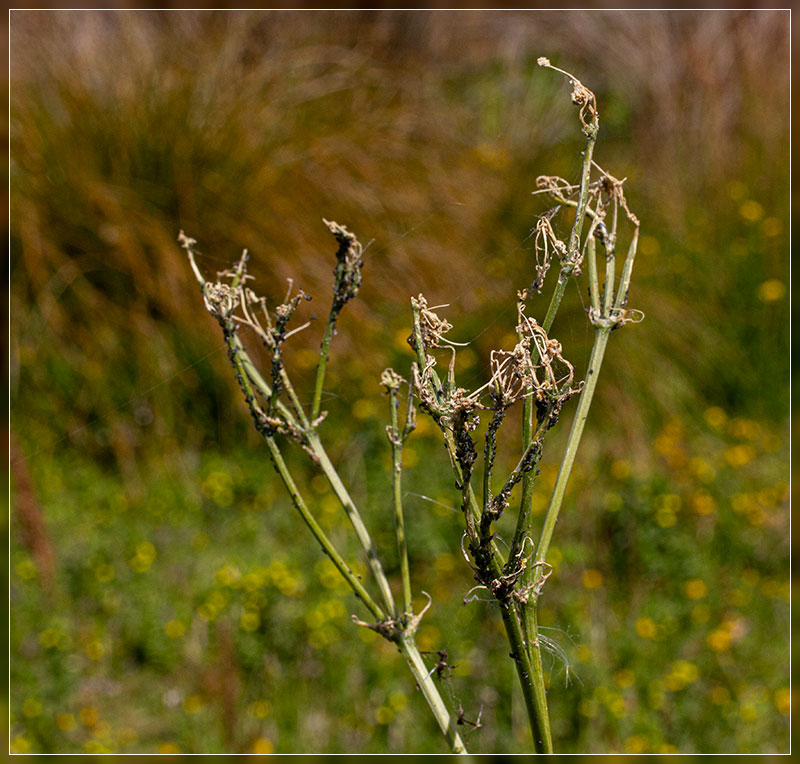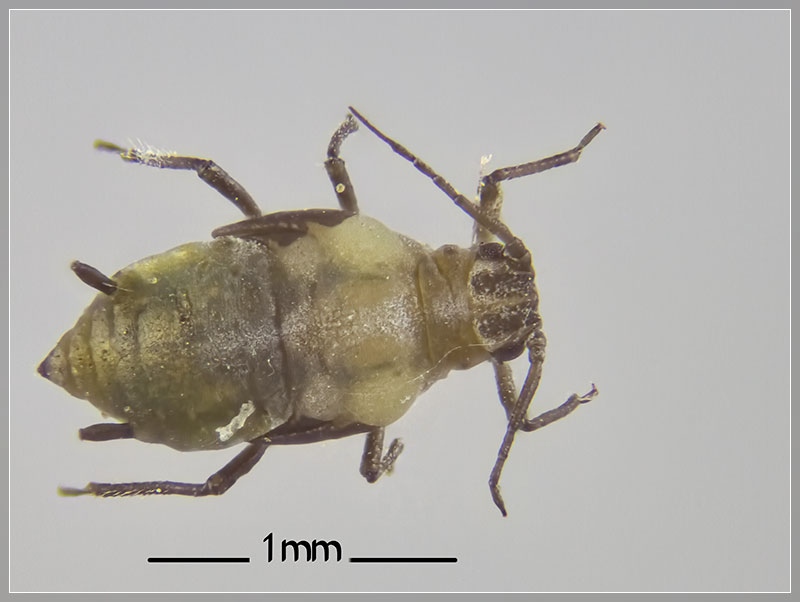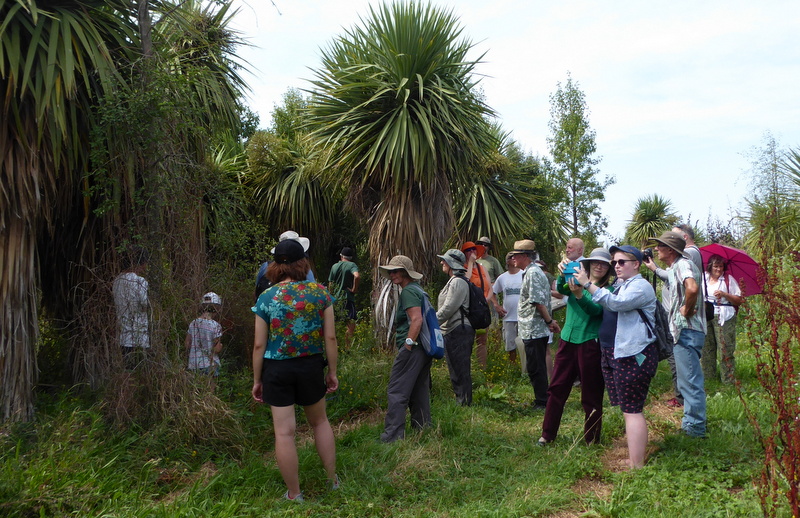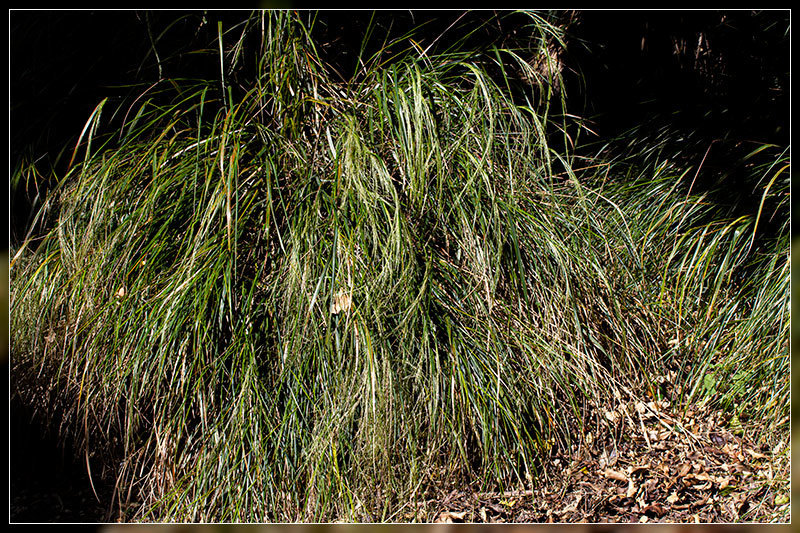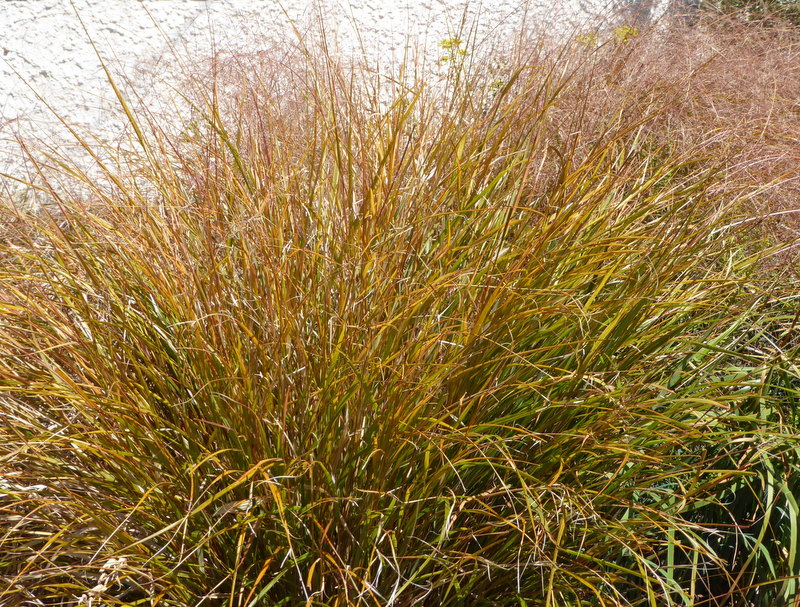Work Day Reminder, Feb 15 2020
The next Travis work day, is Saturday February 15 2020, 9 am – 12:30.
Meet at the Education Centre (the old farm house) near the Beach Rd car park at 9 am. Click on the adjacent location map for a more detailed view.
We’ll probably be doing some releasing somewhere around the wetland, but plans change with the weather! When we leave the Education Centre to work elsewhere in the wetland a notice board in the porch will indicate where we have gone, if it’s not obvious. Please join us.
All tools provided. It’s liable to be wet underfoot, so gumboots are advised. If you don’t own any we do have some for loan.
Latest News
Work Day, Saturday 18 January
What a superb turnout for our first workday for the decade. It was great to have 28 people keen to assist, including 2 families with young children.
A fine morning with an easterly breeze and partial cloud was perfect for our trek to the Southern Woods. This area is close to Travis Road and has been planted in small sections since 2006.
Our main mission was to remove convolvulus which was most prolific in the eastern area. With a big group we were able to clear this efficiently, though convolvulus wrapped around blackberry proved challenging without heavy duty gloves. We also released recent plantings from weed growth as we moved west. Much of the area look pretty as it was carpeted with fallen flowers from lacebark trees.
Some large hemlock were removed and unfortunately we also found a few tall specimens of the noxious weed Great Willowherb (Epilobium hirsutum).
Ranger John Skilton took us for an interesting tour of this off-track area on the way back, explaining about planting success and failures and earthquake effects .
Refreshments back at the Ed Centre were most welcome as usual. A lavishly decorated carrot cake helped us celebrate the birthdays of Colin Meurk and Joe Greenaway. Thanks to all who attended and sorry you missed the cake Joe!
Article: Sue Britain, Images: Grahame Bell
Honeysuckle Aphid, Hyadaphis passerinii
When we think aphids, we thinking about a super family of insects which includes over 5,000 species of plant-specific parasites. They are generally quite small, only a few mm, they have a bulbous abdomen and come in a variety of colours from white to black with green and orange in between. Gardeners often call them greenfly or whitefly etc. They have an interesting life cycle with wingless females being able to reproduce parthenogenetically, ie without the involvement of males. Females mature rapidly allowing them to reproduce profusely. Winged females occur later in the season allowing them to colonise new areas.
In late December I found this dark coloured aphid living on Hemlock. Quite large colonies living on the plant stems below the flower. The plants were not having a good time of it with the flowers dying rapidly due to lack of nutrient. A rather effective form of bio control. I watched these aphids over a couple of weeks as they rapidly moved from plant to plant in an area with quite a lot of Hemlock growing. They left a trail of dead and dying plants behind them.
I can hear you thinking these are Honeysuckle aphids so why the talk of Hemlock. They have a rather unusual lifestyle. During the summer they feed on Hemlock and other umbellifers (think carrot, celery, parsley etc). In the autumn the move to Honeysuckle to over winter. Travis has a few patches of Japanese Honeysuckle so I’m guessing that is where I will find them. Aphids are surprisingly good fliers and can travel large distances. It’s even thought that one species made it from NZ to Tasmania !!!
Hyadaphis Passerinii are known world wide from Europe and the Middle East to the US, South Africa and Australia. In the late 1990s a farmer from Wellsford – the late John Foster – led a campaign, via the local beef and lamb monitor farm group, to introduce into New Zealand an insect parasite to control scotch thistles. It was eventually released in Northland just before Christmas 1998, then later on in Canterbury, Marlborough and Southland. Another small interesting overlooked species calling Travis home.
Article and images: Grahame Bell
World Wetlands Day, Sunday 2nd February
This gruellingly hot morning with temperatures above 30 degrees was more suitable for celebrating deserts than wetlands but we made the best of it. Twenty-four people, including 2 families, made the long trek along the treeless gravel road to the Southern Woods. On the way we stopped at the information kiosk and bird hide where Colin Meurk explained the history of the wetland. Planting successes such as fruiting totara trees and juvenile pohaka were show-cased. Wayne and Eleanor found some creepy crawlies, including bag moth and young praying mantis, to entertain the children.
The ground in the southern woods was unusually dry and hard with no need to leap over the usual ditch to gain access. Colin pointed out key tree species mataī and tōtara as well as the smaller species growing there.
The heat was too much for some of us and we were glad to potter back to the Ed Centre for cool drinks and snacks. Colin explained a little about visions for the future and thanked everyone for coming along.
Article: Sue Britain, Image: Dave Evans
NZ Gossamer Grass, Anemanthele lessoniana
Gossamer grass or Wind Grass is indigenous to Aotearoa NZ and declining in the wild around the country, but I have no idea why. It is widely cultivated in Christchurch and once you have it in your garden it spreads prolifically, it appears everywhere in my garden. The council has made mass plantings around the city and they do very well even in dry conditions. In the shade they are often quite green, but in full sun it takes on a coppery, gold colour, especially when flowering. It’s even sold in the UK.
Article: Dave Evans, Images: Grahame Bell and Dave Evans
Recent Observations
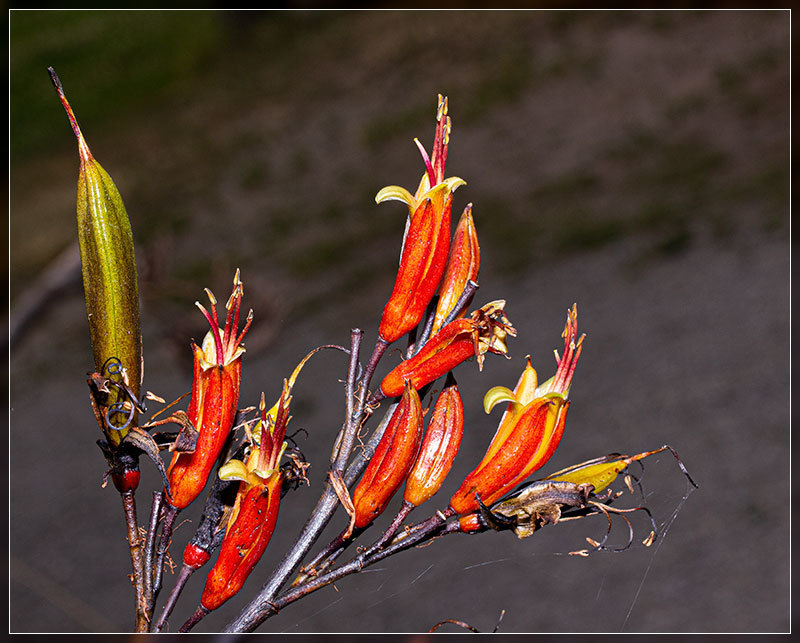
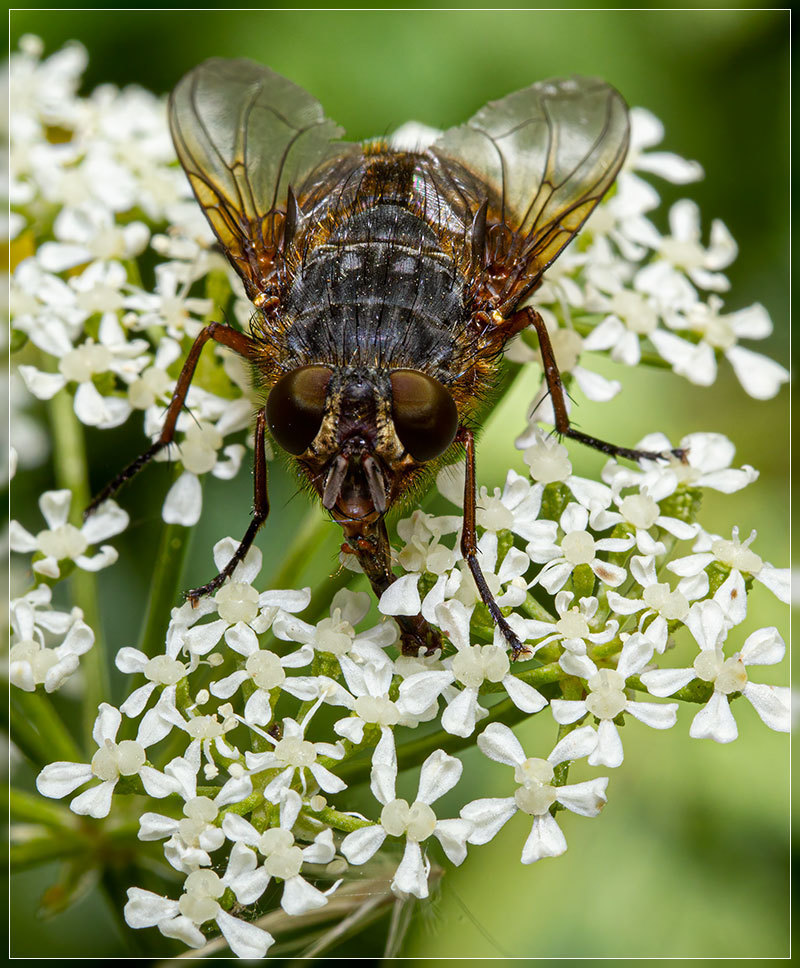
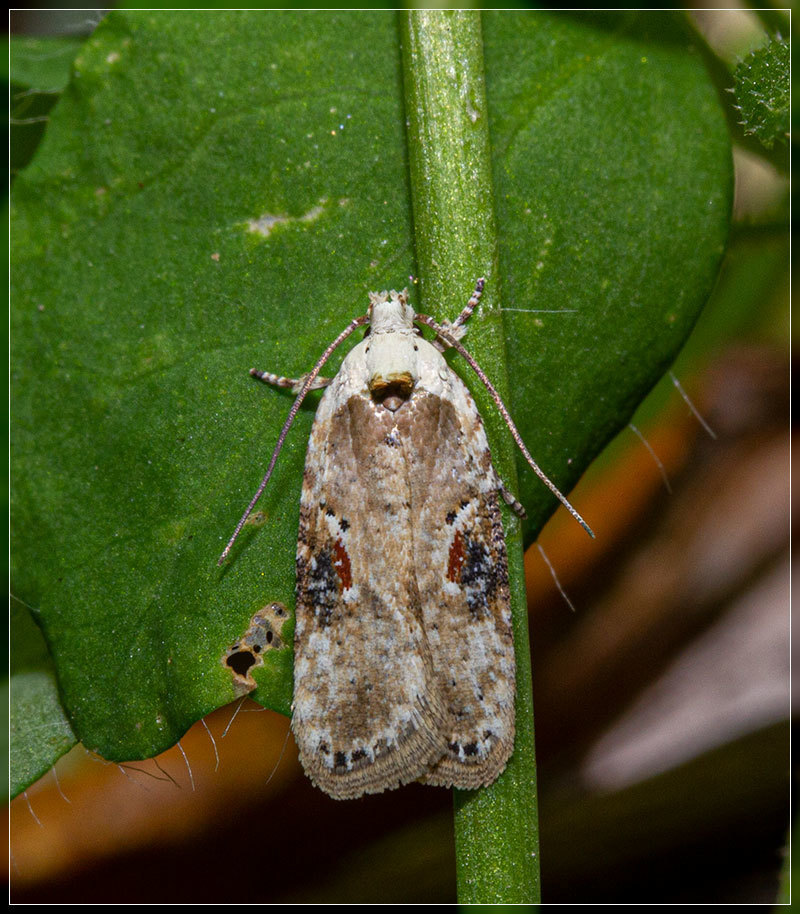
Images: Grahame Bell


